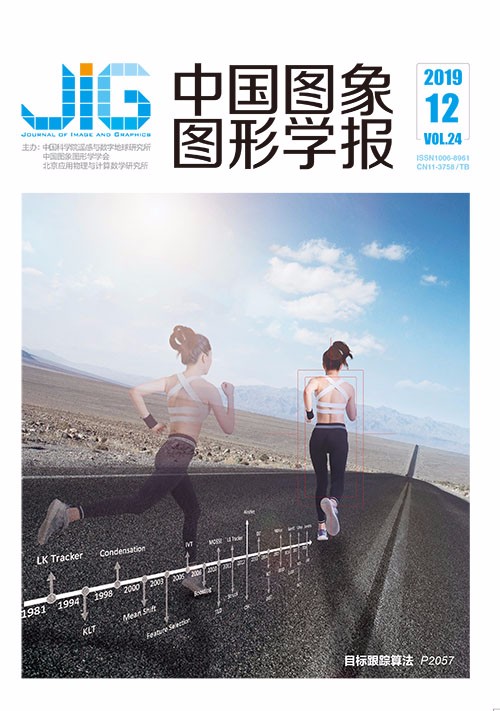
卫星遥感及图像处理平台发展
赵忠明1,2, 高连如1, 陈东2, 岳安志1, 陈静波1, 刘东升3, 杨健1, 孟瑜1(1.中国科学院空天信息创新研究院, 北京 100094;2.中国人民解放军93114部队, 北京 100085;3.北京航天宏图信息技术有限公司, 北京 100195) 摘 要
航天科技是国家综合国力和科技实力的重要体现,而卫星遥感则是航天科技转化为生产力最直接、最现实的途径之一。遥感数据获取与分发、数据处理与信息提取是卫星遥感应用的两个基本步骤。随着国家民用空间基础设施规划中的遥感卫星体系稳步推进,以及商业卫星遥感的蓬勃发展,我国的卫星遥感数据获取能力呈现质量齐升之势。但同时,作为卫星遥感应用的基础设施和关键工具,遥感图像处理系统平台逐渐成为制约自主卫星数据应用和空间信息业务发展的重要因素之一。本文围绕卫星遥感对地观测主题,从卫星遥感数据获取能力、卫星遥感数据处理系统平台两方面,对国内外现状进行综述,在此基础上分析了卫星遥感的发展趋势。
关键词
Development of satellite remote sensing and image processing platform
Zhao Zhongming1,2, Gao Lianru1, Chen Dong2, Yue Anzhi1, Chen Jingbo1, Liu Dongsheng3, Yang Jian1, Meng Yu1(1.Aerospace Information Research Institute, Chinese Academy of Sciences, Beijing 100094, China;2.The Army of 93114, Beijing 100085, China;3.Beijing Piesat Information Technology Co., Ltd., Beijing 100195, China) Abstract
Aerospace science and technology (S&T) is a direct indicator of comprehensive national power and S&T strength. Satellite remote sensing is one of the most immediate and realistic productivities transformed from aerospace S&T, which is composed of two broad procedures:remote sensing data acquisition and dissemination and data processing and information extraction. On the one hand, given the steady promotion of China's Civil Space Infrastructure, the capacity for satellite image acquisition has been enhanced largely in terms of quality and quantity. On the other hand, an image processing platform is a considerable infrastructure for satellite remote sensing application. Platform development is increasingly becoming an important factor restricting the application of satellite remote sensing and the development of spatial information-related business. This paper reviews state-of-the-art status and analyzes the future trend of acquisition capacity and processing platform of satellite remote sensing image.In terms of data acquisition and dissemination, international open remote sensing satellites and sensors, such as Terro/Aqua-MODIS, Landsat, and Sentinel, have largely broadened and deepened applications of satellite remote sensing imagery. Data sharing policy and regularized senior image product enable the use of these commonweal data to analyze a long-term geographical phenomenon in a large region. Large commercial satellites, such as WorldView, Pleiades, and Radarsat, are operated by sizeable commercial remote sensing firms. The imagery obtained by big satellites helps promote the commercial value of satellite imagery in traditional industry applications, whereas small commercial satellite constellations, such as Flock, SkySat, and BlackSky, lower the barrier for more generalized and common applications. With the steady promotion of China's Civil Space Infrastructure, China's 27 civil remote sensing satellites in orbit can be broadly categorized into land, ocean, and atmosphere observation satellites. Land observation satellites are composed of GaoFen, HuanJing, and ZiYuan series, and sensors onboard can acquire high-resolution visible-near infrared, hyperspectral, thermal, and synthetic aperture radar (SAR) imagery. Over 30 small commercial satellites in orbit include BeiJing, GaoJing, JiLin, and ZhuHai series. Despite the substantial progress of China's capacity for remote sensing data acquisition and dissemination, distinct generation gaps remain, especially in terms of new type sensors such as polarization and electromagnetic monitoring sensors. Policy barrier, data regularity, and quality as well as data sharing model in big data era are the main challenges encountered in data sharing. Several efforts, including project on big earth data science engineering, have been made to accelerate the development of satellite remote sensing data sharing.In terms of satellite remote sensing processing platforms, well-known platforms such as ERDAS IMAGINE, ENVI, and PCI Geomatic lead the development worldwide. The leadership can be characterized by four advantages. First, platform expandability is reflected by flexible deployment environment, powerful secondary development capability, and seamless integration with GIS platforms. Second, these platforms support the processing of multi-source and multi-format remote sensing data. Multi-source data refer to optical, SAR, LiDAR, and hyperspectral data, while multi-format data refer to image, point cloud, and video data. Third, ERDAS IMAGINE and ENVI start to develop modules based on deep learning algorithms, such as Faster RCNN. The introduction of deep learning is based on its overwhelming accuracy compared with traditional machine learning algorithms, such as SVM. Finally, algorithms and hardware, such as GPU, DSP, and FPGA, are integrated more tightly to continue promoting data processing efficiency. In China, common platforms such as IRSA, ImageInfo, Titan Image, and PIE pay more attention to satellite optical imagery processing despite limited support for multi-source data. Specialized software, including HypEYE and CAESAR, are developed to fulfil the demands of hyperspectral and SAR image processing. In the last 10 years, cloud computing technology has been introduced into remote sensing imagery processing platforms because of its advantage of providing one-step geospatial service by integrating remote sensing data, information product, application software, and computing and storage resources. Google Earth Engine, Data Cube, ENVI Service Engine, and ERDAS APOLLO are some of the successful platforms, and several similar platforms are available in China. China's self-developed remote sensing imagery processing platforms are not competitive with their international counterparts owing to backwardness caused by a lack of independent innovation and steady profit model.Four evident trends are observed in satellite remote sensing in the era of big data and artificial intelligence. First, small satellite constellations accelerate the industrialization and popularization of satellite remote sensing, while the improvement of geometric and radial accuracy remains the bottleneck. Second, autonomous and intelligent satellites with capabilities of adaptive optimization of imaging parameters, onboard thorough perception of object, and environment are future directions of remote sensing. The intelligent satellite will be an essential component of collaborative unmanned systems. Third, the transformation from meaningless DN value to semantic object information based on artificial intelligence techniques will certainly improve the information provided by satellite remote sensing in terms of quantity and quality. Finally, the integration of position and navigation, time, remote sensing, and communication platforms and signals will magnify remote sensing capability by providing application-oriented solutions.
Keywords
|



 中国图象图形学报 │ 京ICP备05080539号-4 │ 本系统由
中国图象图形学报 │ 京ICP备05080539号-4 │ 本系统由